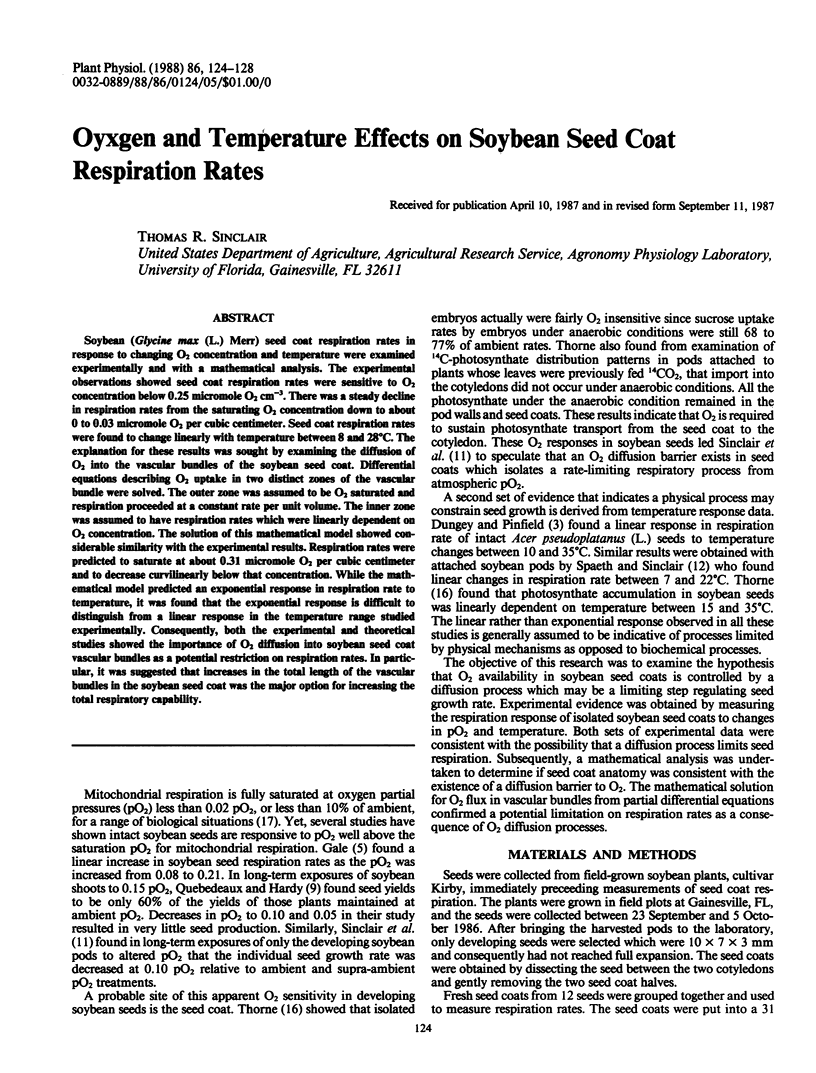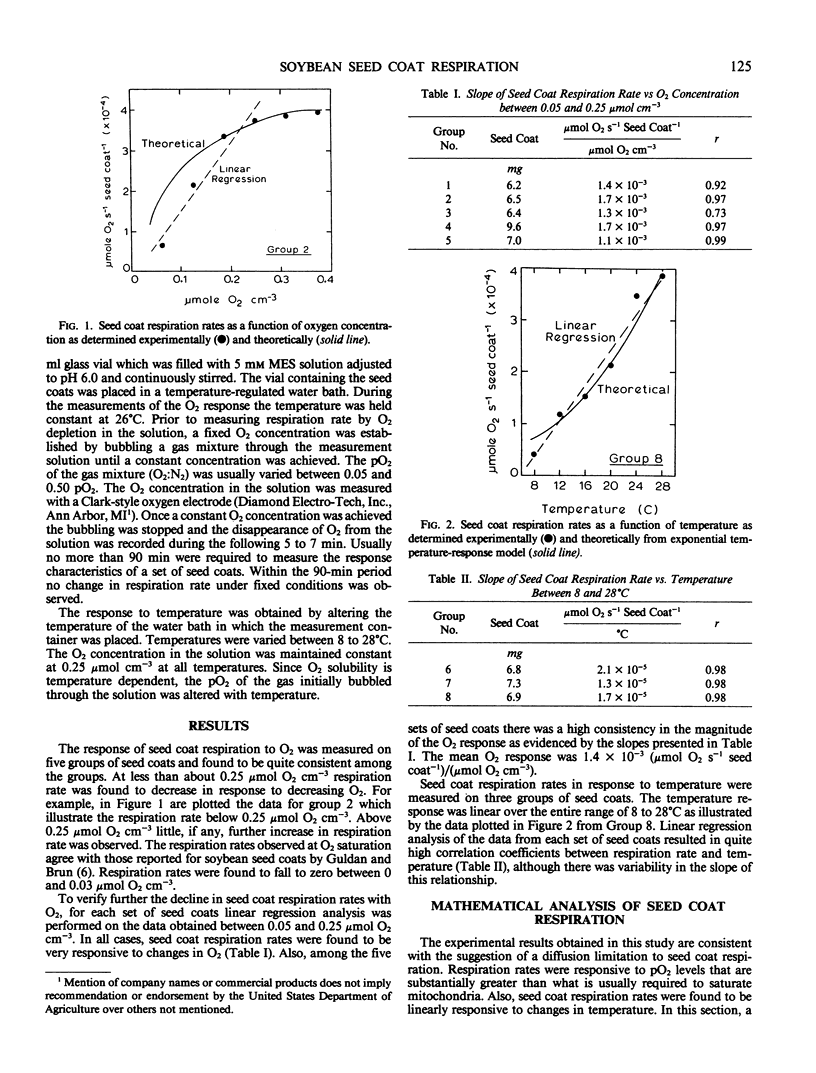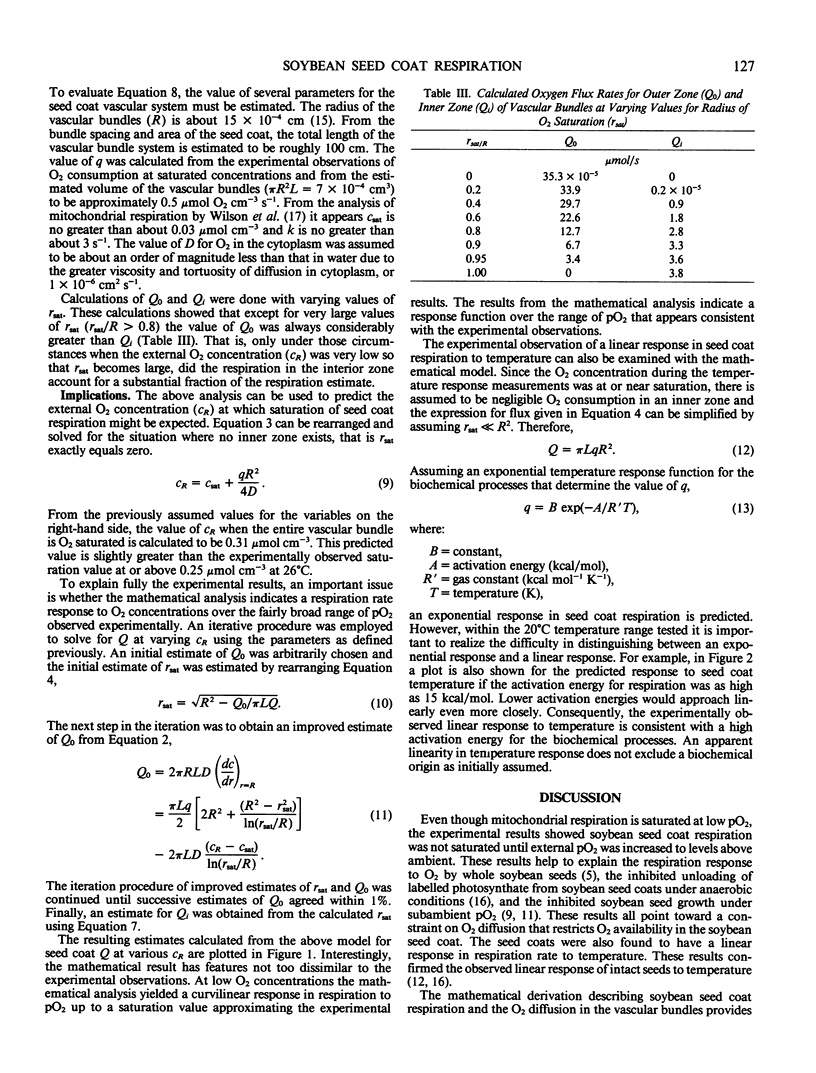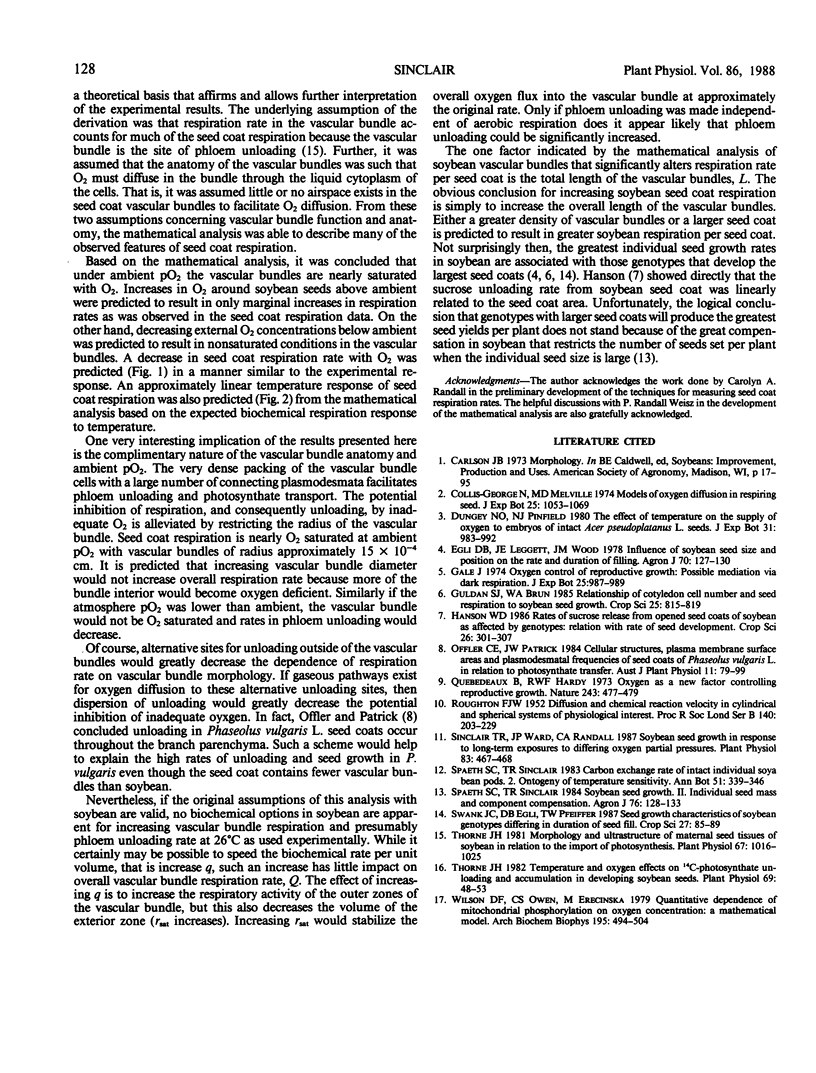Abstract
Soybean (Glycine max (L.) Merr) seed coat respiration rates in response to changing O2 concentration and temperature were examined experimentally and with a mathematical analysis. The experimental observations showed seed coat respiration rates were sensitive to O2 concentration below 0.25 micromole O2 cm−3. There was a steady decline in respiration rates from the saturating O2 concentration down to about 0 to 0.03 micromole O2 per cubic centimeter. Seed coat respiration rates were found to change linearly with temperature between 8 and 28°C. The explanation for these results was sought by examining the diffusion of O2 into the vascular bundles of the soybean seed coat. Differential equations describing O2 uptake in two distinct zones of the vascular bundle were solved. The outer zone was assumed to be O2 saturated and respiration proceeded at a constant rate per unit volume. The inner zone was assumed to have respiration rates which were linearly dependent on O2 concentration. The solution of this mathematical model showed considerable similarity with the experimental results. Respiration rates were predicted to saturate at about 0.31 micromole O2 per cubic centimeter and to decrease curvilinearly below that concentration. While the mathematical model predicted an exponential response in respiration rate to temperature, it was found that the exponential response is difficult to distinguish from a linear response in the temperature range studied experimentally. Consequently, both the experimental and theoretical studies showed the importance of O2 diffusion into soybean seed coat vascular bundles as a potential restriction on respiration rates. In particular, it was suggested that increases in the total length of the vascular bundles in the soybean seed coat was the major option for increasing the total respiratory capability.
Full text
PDF




Selected References
These references are in PubMed. This may not be the complete list of references from this article.
- ROUGHTON F. J. W. Diffusion and chemical reaction velocity in cylindrical and spherical systems of physiological interest. Proc R Soc Lond B Biol Sci. 1952 Oct 16;140(899):203–229. doi: 10.1098/rspb.1952.0059. [DOI] [PubMed] [Google Scholar]
- Sinclair T. R., Ward J. P., Randall C. A. Soybean seed growth in response to long-term exposures to differing oxygen partial pressures. Plant Physiol. 1987 Mar;83(3):467–468. doi: 10.1104/pp.83.3.467. [DOI] [PMC free article] [PubMed] [Google Scholar]
- Thorne J. H. Morphology and ultrastructure of maternal seed tissues of soybean in relation to the import of photosynthate. Plant Physiol. 1981 May;67(5):1016–1025. doi: 10.1104/pp.67.5.1016. [DOI] [PMC free article] [PubMed] [Google Scholar]
- Thorne J. H. Temperature and oxygen effects on C-photosynthate unloading and accumulation in developing soybean seeds. Plant Physiol. 1982 Jan;69(1):48–53. doi: 10.1104/pp.69.1.48. [DOI] [PMC free article] [PubMed] [Google Scholar]
- Wilson D. F., Owen C. S., Erecińska M. Quantitative dependence of mitochondrial oxidative phosphorylation on oxygen concentration: a mathematical model. Arch Biochem Biophys. 1979 Jul;195(2):494–504. doi: 10.1016/0003-9861(79)90376-x. [DOI] [PubMed] [Google Scholar]


